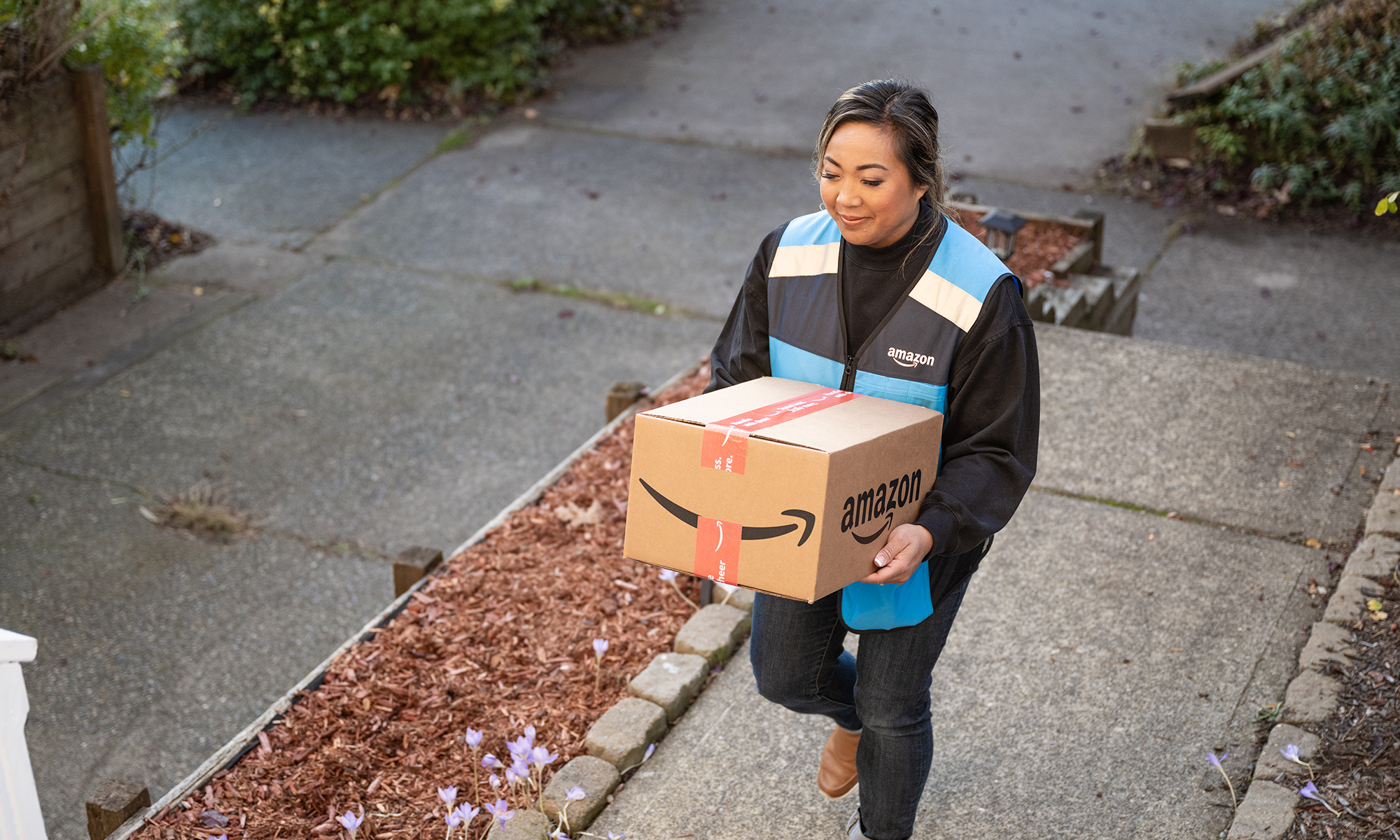A recent New York Times article about Amazon's (AMZN +0.50%) plans to test the waters in the competitive world of physical retail raises lots of interesting points. The idea sounds absurd and regressive for an online retail powerhouse that's working on drones and autonomous trucks to automate its delivery process, but it could turn out to be an ingenious move.
Why offline retail could be a big deal for Amazon
Amazon is reportedly working out the kinks so it can roll out its cashierless convenience store concept, called Amazon Go, which automatically charges people when they exit rather than make them wait in line to pay.
This is a step into the brick-and-mortar world of grocery retailing. It makes sense to try to sell groceries to people this way, as only an estimated 23% of households in the U.S. shopped for groceries online last year, and this channel accounted for just an estimated 4.3% of the total grocery spending in 2016. One estimate puts online sales at only 20% of grocery sales by 2025, so Amazon is smart both to provide people with physical stores where they can buy food (Amazon Go) and to build up the distribution network that supports AmazonFresh, which lets people order groceries online and pick them up in person.
AmazonFresh is being tested in Seattle, where it's allowing customers to purchase grocery items online and then select a time for pick-up, which can be in as little as 15 minutes. The customer drives to the pick-up location, where service agents will load the items into the car. This model allows Amazon to build a hyperlocal presence, which will be useful in helping it tap the offline grocery market.

Image Source: Amazon.
The competition will be fierce
Amazon, however, is moving into a market where it will run into stiff competition from established big-box retailers. Citi Research believes that Wal-Mart (WMT +1.29%) is the best-placed company to take advantage of online grocery retail.
Wal-Mart has a solid lead in the online grocery market, as its "click-and-collect" model (which lets people order online and pick up in store) is currently present across 600 locations in more than 100 markets in the U.S. Perhaps more importantly, Citi research reported by CNBC showed that Wal-Mart items were much cheaper than AmazonFresh's.
However, investors need to understand that the e-tailer doesn't need to become a leader in the online grocery market. Amazon's top line will receive a nice boost even if it corners a small percentage of the market for food-at-home items estimated to be $100 billion by 2025. And taking away market share from smaller grocery players -- perhaps those in the organic-foods market, where higher prices are more accepted -- is an ideal game plan.
This could be a potentially fertile ground for the online retailer, as the global organic-foods market is estimated to grow at 16.6% a year until 2025, putting it at an estimated $456 billion. Even if only a fifth of those sales were made online, that could still be a big market.







